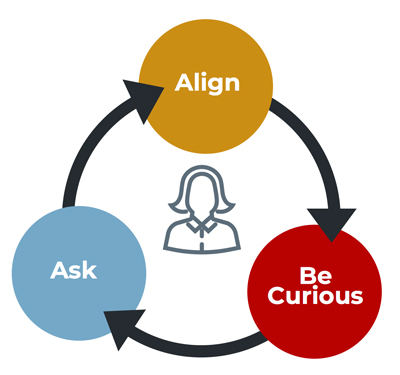Truth Bomb #3: You Must Have Alignment of Mission
Third in a six-part series: Truth Bombs About Major Gifts Why does your organization exist today? Is it relevant? Is it meeting a societal need? You...
4 min read
Richard Perry and Jeff Schreifels : October 8, 2018

One of the biggest errors in asking is to assume that the process is linear, i.e you start at one point and, through a succession of steps, you get to the final conclusion. The steps are all in order, like stakes in the ground – where you complete one step, then move to another, then another and then you’re done.
We don’t think this is how real life and relationships work. Nor is it effective.
You know as well as we do that real-life interaction with others is circular. You start the interaction in one place and then receive a reaction. If you are operating with a belief that honoring the other person is important (as Jeff and I do), then you take that reaction and adjust – rather than just plowing through with your agenda. This is delicate, I know.
And this is why we call this part of Permission-Based Asking™ the Alignment Circle. Because it’s that part of the “system” where you seek to align to the donor and her passions and interests. (See my description of the initial parts of this asking model here.)
Please note several things about the alignment circle below:

Copyright 2018, Veritus Group LLC
First, you always need to keep the donor in the center of the alignment. That is why we put a symbolic figure at the center – this is to help you remember that the donor must be at the center, and she must be the decision-maker.
Then there are three integrated steps in the circle as follows:
Then Facilitate: Ask permission, through a quick question, to move to the next part of your meeting. You are signaling a transition to asking. Example: “You said earlier that the main reason you are interested in X is this. I want to tell you about how you can fulfill that interest. Is that OK with you?”
3. Ask – The objective here is to ask. Here you are asking the donor to take an action, to make a decision, to commit to giving. This needs to be short and said in one breath: Example: “Would you consider a gift of $x for Project X?” Keep it simple, clear, and concise – and then pause to let the donor respond.
Note that there is not more to say at this point, because the majority of the work is what happened earlier in the align and be curious steps. If you’ve done those correctly, the ask stage follows naturally.
There is a great deal of complexity that follows the asking step, in that there are all types of options the donor has that you will encounter once you have asked. And any one of those options will force you to go around the alignment circle a number of times in one conversation.
You may have to check in on whether the donor’s interests are truly aligned with a project you are proposing, or questions she may have about the materials on the project you sent, or thoughts, concerns or objections about the project. Or she may say “no” or “maybe” – and that will have you circling around again. This is good, and I will deal with those options in a later blog.
My next post will look at the celebrate step. This is so important. I am looking forward to sharing it with you. And Jeff and I are thrilled with the tremendous response we have had from our readers on the model. Thank you.
Richard

Third in a six-part series: Truth Bombs About Major Gifts Why does your organization exist today? Is it relevant? Is it meeting a societal need? You...

Copyright© 2018 Veritus Group LLC
3 min read
If you have been trained correctly as a development professional, you are donor-centered, providing outstanding customer service and essentially...